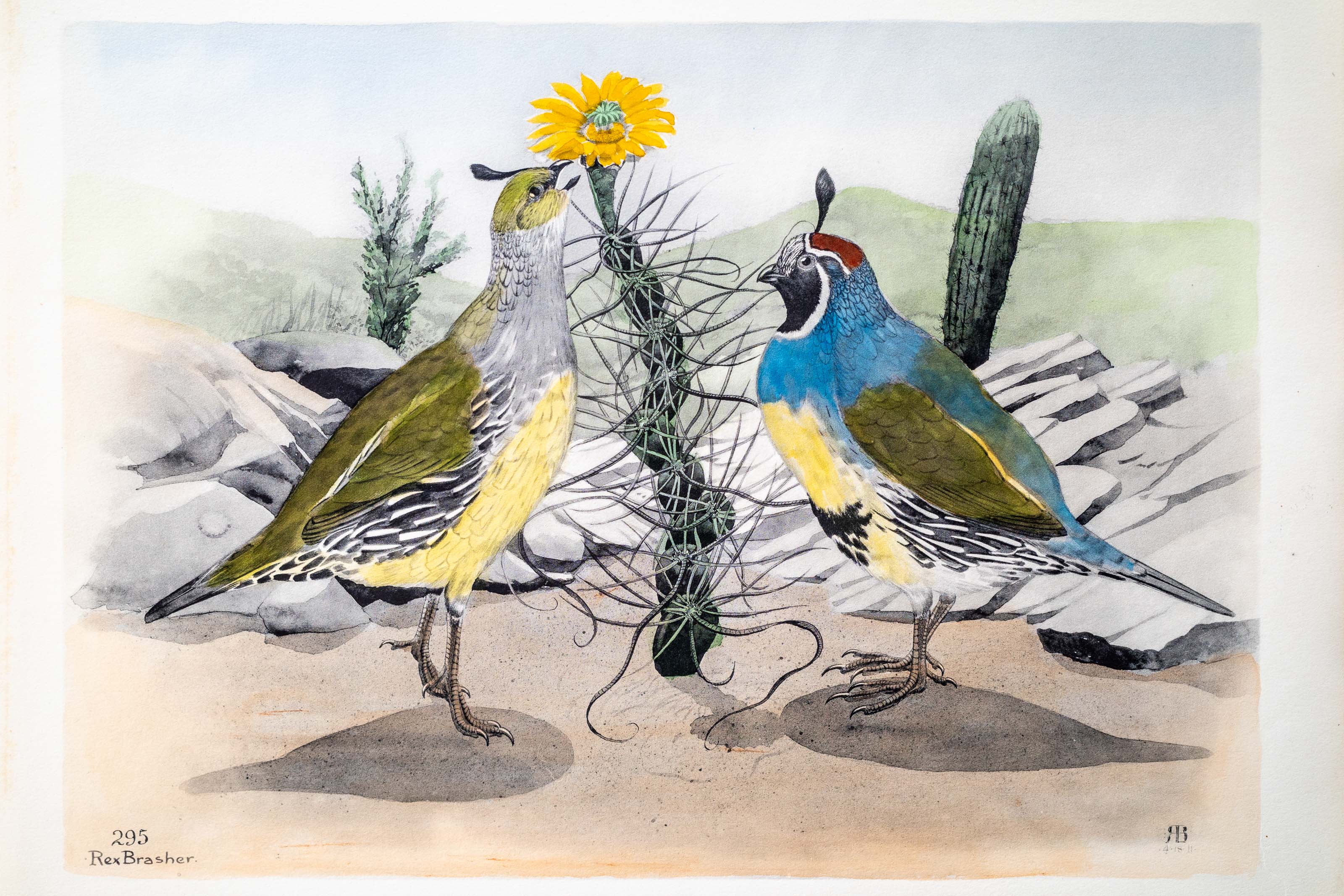
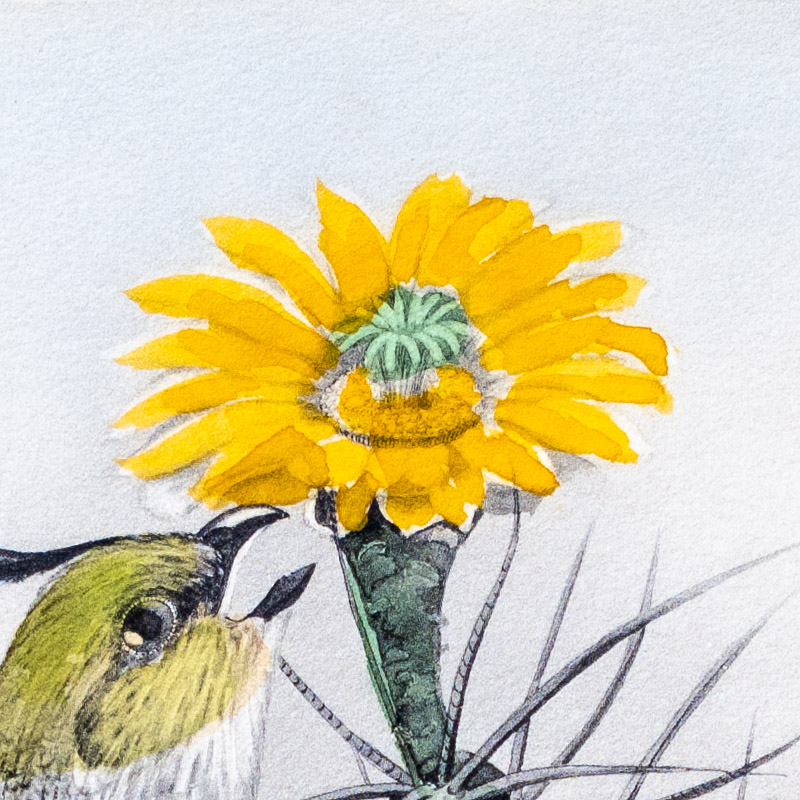
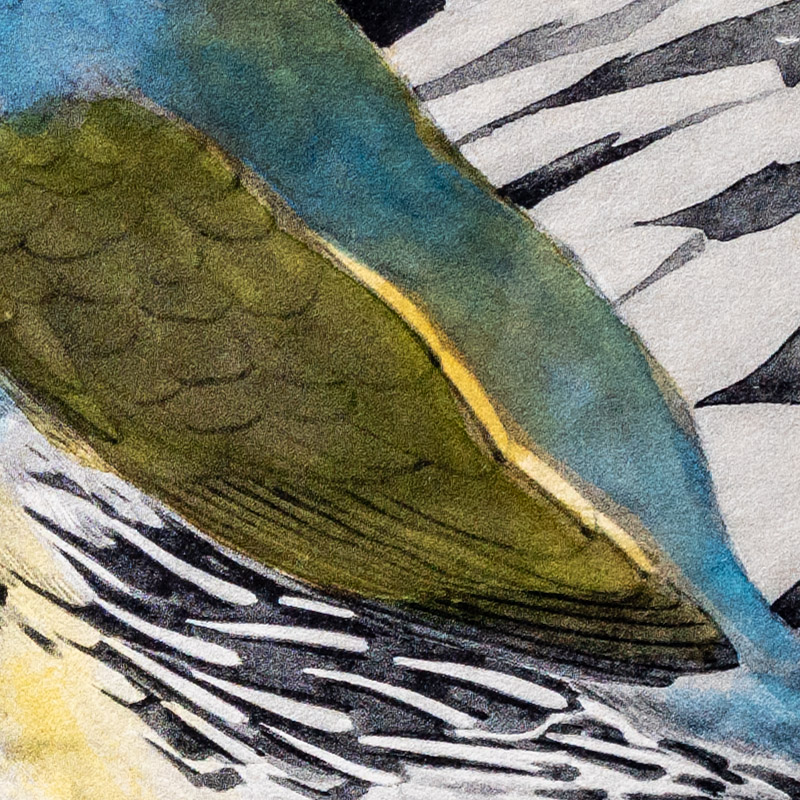
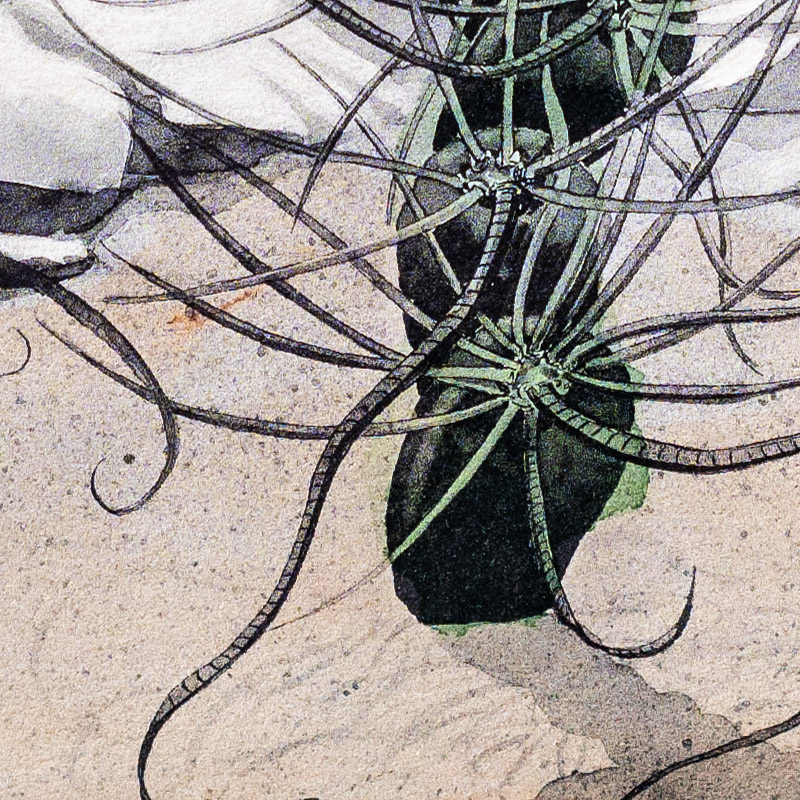

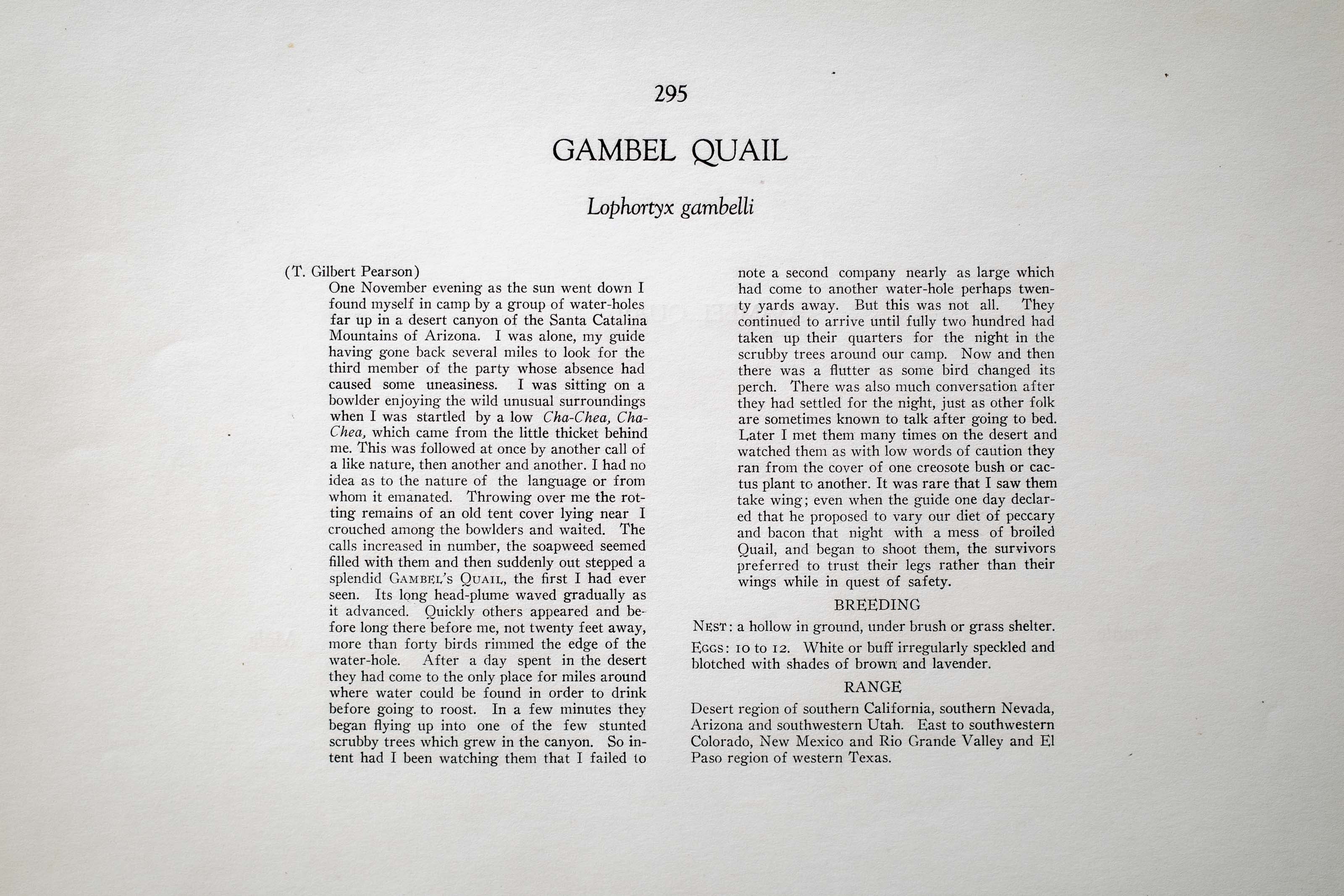

1911
1930
5
295
A team of dedicated board members, volunteers, and student interns has published every page in Volume 9. This volume includes 360 images of paintings and lyrical descriptions of birds, now available online for everyone to enjoy anywhere in the world. This is a monumental task. Each volume requires approximately 400 hours to photograph, edit, transcribe, catalog, and publish online. We need your support to complete this work.
If you're tech-savvy, have a good eye, are meticulous with details, and love structured data, please consider volunteering by emailing us at hello@rexbrasher.org.
We encourage all bird lovers and supporters to consider a monetary donation to support our mission to make Rex's work available for everyone. You can provide a one-time or recurring donation online.
(T. Gilbert Pearson)
One November evening as the sun went down I found myself in camp by a group of water-holes far up in a desert canyon of the Santa Catalina Mountains of Arizona. I was alone, my guide having gone back several miles to look for the third member of the party whose absence had caused some uneasiness. I was sitting on a bowlder enjoying the wild unusual surroundings when I was startled by a low Cha-Chea, Cha-Chea, which came from the little thicket behind me. This was followed at once by another call of a like nature, then another and another. I had no idea as to the nature of the language or from whom it emanated. Throwing over me the rotting remains of an old tent cover lying near I crouched among the bowlders and waited. The calls increased in number, the soapweed seemed filled with them and then suddenly out stepped a splendid GAMBEL'S QUAIL, the first I had ever seen. Its long head-plume waved gradually as it advanced. Quickly others appeared and before long there before me, not twenty feet away, more than forty birds rimmed the edge of the water-hole. After a day spent in the desert they had come to the only place for miles around where water could be found in order to drink before going to roost. In a few minutes they began flying up into one of the few stunted scrubby trees which grew in the canyon. So intent had I been watching them that I failed to note a second company nearly as large which had come to another water-hole perhaps twenty yards away. But this was not all. They continued to arrive until fully two hundred had taken up their quarters for the night in the scrubby trees around our camp. Now and then there was a flutter as some bird changed its perch. There was also much conversation after they had settled for the night, just as other folk are sometimes known to talk after going to bed. Later I met them many times on the desert and watched them as with low words of caution they ran from the cover of one creosote bush or cactus plant to another. It was rare that I saw them take wing; even when the guide one day declared that he proposed to vary our diet of peccary and bacon that night with a mess of broiled Quail, and began to shoot them, the survivors preferred to trust their legs rather than their wings while in quest of safety.
NEST: a hollow in ground, under brush or grass shelter.
EGGS: 10 to 12. White or buff irregularly speckled and blotched with shades of brown and lavender.
Desert region of southern California, southern Nevada, Arizona and southwestern Utah. East to southwestern Colorado, New Mexico and Rio Grande Valley and El Paso region of western Texas.